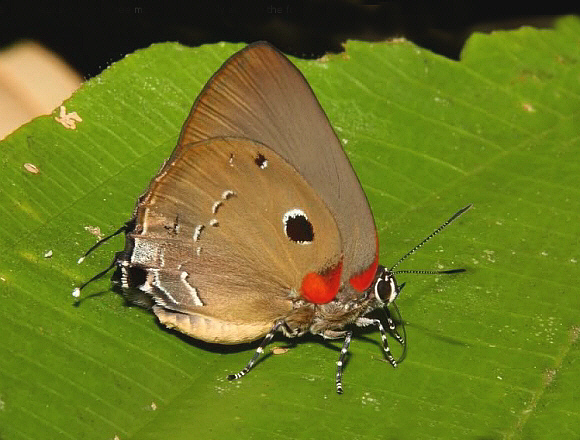
Introduction
Almost all neotropical Theclinae species are placed in the Eumaeini. The tribe is not particularly well represented in collections, so until fairly recently a high percentage remained unstudied, and were inappropriately filed away in the ‘convenience’ genus Thecla. Many taxonomists have attempted to rationalise the systematics of the Eumaeini, the most recent being Robbins who published a revision in 2004, reclassifying the taxa into 83 genera. Currently there are 1058 known species. Taking into account their small size, secretive behaviour, and the great similarities between many species, it is estimated that about another 200 species probably remain to be discovered.
The genus Olynthus contains 20 species. On the upperside, males of all species are metallic blue or turquoise, with well-defined broad black margins. The undersides are so variable from one species to another that it is virtually impossible to describe any common visual characteristics, other than that they all possess a single long filamentous tail. Most of the species are quite distinctive – the red basal spot and large black cell spot of narbal making it instantly recognisable. It should however be noted that the red spots are not present in all individuals of the species.
Olynthus narbal is known from Panama, Colombia, Surinam, Guyana, Brazil and Peru.
Habitats
To be completed.
Lifecycle
To be completed.
Adult behaviour
To be completed.
